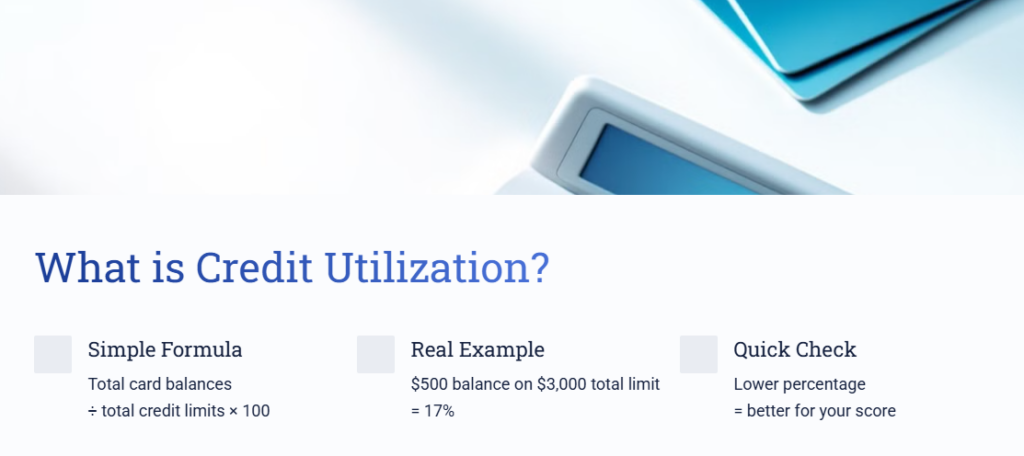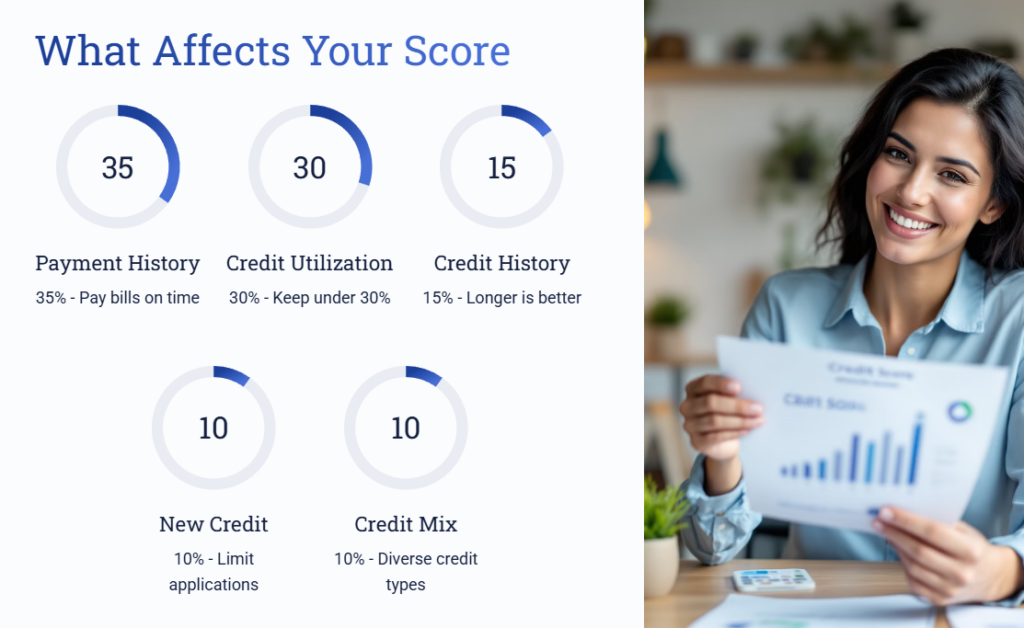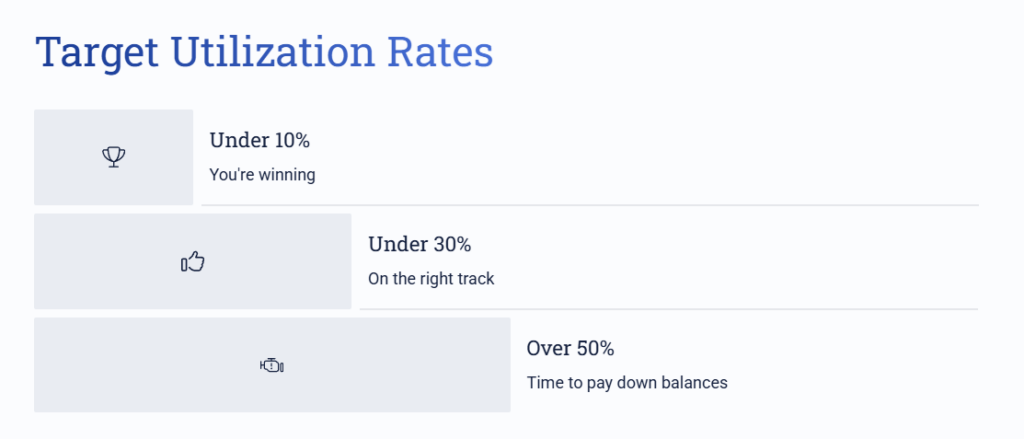So you finally got a credit card (or a few), you’re making your payments, and you think you’re doing great. But then you check your credit score… and it’s not quite where you thought it’d be. Frustrating, right? One sneaky little number might be messing with you: credit utilization.
Let’s cut through the noise and really talk about what it is, why it matters, and how to work it in your favor—without feeling like you’re taking a personal finance class.
Part of the Series: Best Strategies for your Credit!
How to Improve Your Credit Score
├─ 10 Proven Boost Your Credit Score Strategies
├─ How to Build Credit with No History: Effective Steps
├─ How to Get Free Annual Credit Report in 3 Steps
├─ Best Secured Credit Cards for Beginners
├─ How Credit Utilization Affects Score [Current Article]
├─ Why Is Your FICO Score Different from Bank to Credit Card?
└─ How Late Payments Affect Your Score
Credit Util-what? Let’s Make This Simple
Credit utilization is a fancy way of asking: “How much of your credit are you using right now?”
Here’s how it works:
Credit Utilization Rate = (Total Balances on All Credit Cards / Total Credit Limits) x 100
You add up all your credit card balances, divide them by your total credit limits, and multiply by 100. That’s your utilization rate.
Example: You’ve got two cards: one with a $500 balance on a $2,000 limit, and the other has no balance and a $1,000 limit. Together, you’re using $500 of $3,000 — so that’s about 17%. Cool? Cool.

Why It Actually Matters in 2025
Credit scoring models like FICO still put a lot of weight on this number—roughly 30% of your total score, in fact. That’s a big chunk.
If you’re constantly maxing out your card (even if you pay it off), it tells lenders, “Hey, I’m a little tight on cash.” On the flip side, showing you’ve got credit available but aren’t glued to it can give your score a nice lift.

Want even more ways to improve your credit score?
👉 Check out these Complete Guide that actually work.
So… What’s a Good Number to Aim For?
Let’s keep it real:
- Under 30%? You’re on the right track.
- Under 10%? You’re winning.
- Over 50%? You might wanna slow down and pay off a chunk.
This isn’t some strict rulebook. Life happens—unexpected bills, emergencies, or just that one sale you couldn’t ignore. But keeping this number low most of the time? Totally worth it.

Alright, How Do I Fix It Without Going Nuts?
You don’t need to micromanage your credit life. But here are a few things that could help without driving you crazy:
- Pay before your balance balloons. Not because the internet said so, but because your credit report snapshots your balance at statement time. If you spent a ton that month, paying early can save your score from flinching.
- Limit increases = more breathing room. If your bank likes you, ask for a credit limit bump. Just don’t take that as a sign to spend more.
- Old cards gathering dust? Keep ‘em. That “Amazon” card you opened for 20% off? Don’t toss it. The longer your credit history, the better.
- Split your spending, sometimes. If one card’s looking bloated, use another one a bit. It helps spread the love and keeps your main card from looking maxed out.
- Double-up payments (if you’re feeling fancy). Pay once mid-month, then again when it’s due. It’s not magic, but it smooths your balances.
Real Talk: Why This Matters for You
This isn’t just about some score on a screen. That three-digit number follows you around: when you’re trying to rent an apartment, buy a car, get a loan, or even apply for certain jobs.
Keeping your credit utilization in check can:
- Help you qualify for lower interest rates
- Make big-ticket dreams (like homeownership) more realistic
- Keep you looking financially responsible without having to say a word
Don’t Fall Into These Traps
A few things that seem harmless but could trip you up:
- Only paying the minimum: You’re doing the bare minimum, and your balance barely moves.
- Closing a card you don’t use: Your credit limit drops, and boom—your utilization shoots up.
- Throwing everything on one card: Even if you pay it off, a high reported balance can still spook your score.

Don’t Overthink It (But Do Pay Attention)
You don’t need to obsess over your utilization rate, but ignoring it altogether isn’t smart either. It’s one of the few parts of your score that you can actually control month-to-month.
Use your cards like you’re in charge (because you are), check your balances every now and then, and keep that ratio low-ish.
One step at a time, you’ll get that score to a place where lenders are nodding with approval—and maybe you’ll even impress yourself a little along the way.


